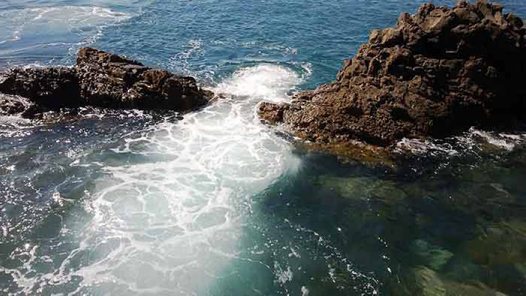That heading comes from PIRSA as part of a warning to fishers regarding rules for removing organisms from intertidal reefs in SA.
Reef Watch says that it gets quite a few reports from members of the public who have observed people taking organisms off intertidal reefs.
The taking of marine organisms from intertidal reefs was banned along the shore of Gulf St Vincent (from Brighton jetty to Cape Jervis) in 1995.
Details of the ban were mentioned in our April 1995 newsletter (No.210) under the title “Marine Organism Prohibition”. The report concerned public consultation on the ban. As our Secretary, I drafted a letter of submission about the ban on our behalf. Details were reported in our June 1995 newsletter (No.212). Our July 1995 newsletter (No.213) discussed a reply received from PIRSA in response to our letter.
The result of the public consultation regarding the ban was that it was extended to cover all coastal water in SA on 1st January 1996. PIRSA issued a pamphlet about the extended ban in August 1996. We have a copy of the pamphlet in our library.
Details of the ban are included on page 6 of the “South Australian Recreational Fishing Guide” (2010).
The PIRSA Fisheries & Aquaculture “SA Recreational Fishing Guide” app also provides details of the ban. Select “Closures” then scroll down to “Intertidal Reef” for details. There it reads “It is illegal to remove any benthic (bottom dwelling) organisms from any intertidal rocky reef in SA”. There is also provision there to click for more information in Pdf form
(http://pir.sa.gov.au/__data/assets/pdf_file/0004/235624/intertidal_zone1.pdf ).
According to the web page found at http://pir.sa.gov.au/fishing/closures_and_aquatic_reserves, “Fishing closures apply to recreational and commercial fishers” and “Taking bottom dwelling organisms from any intertidal rock reefs in South Australia is prohibited”.
At http://pir.sa.gov.au/fishing/closures_and_aquatic_reserves/fishing_closures/intertidal_reefs it reads: “Intertidal reefs are the rocky areas of coastline between the low and high tide marks. It is illegal to remove any bottom dwelling organisms from any intertidal rocky reef in South Australia. This area is measured from the high water mark to a water depth of 2 metres.
Intertidal animals include:
- abalone
- barnacles
- coral
- crabs
- limpets
- mussels
- shrimps
- snails
- worms
Removing intertidal animals at risks will reduce the fish population. Intertidal animals are a food source for animals up the food chain. Disrupting the intertidal animals will reduce food sources for fish. Healthy intertidal zones will help increase fish population.”
A pdf file of an updated pamphlet about the protection of intertidal reefs in SA can be found at http://pir.sa.gov.au/__data/assets/pdf_file/0004/235624/intertidal_zone1.pdf .
PIRSA says “Members of the public are urged to report suspicious or illegal fishing activity to the 24 hour Fishwatch number 1800 065 522 or via the SA Recreational Fishing Guide smartphone app, available for free download from www.pir.sa.gov.au/recfishingapp

